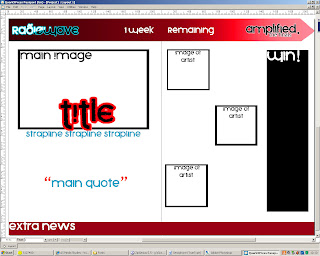Although successfully booking the studio for the 20th, I was very short of time as my friend who offered to be the male model was delayed, and the time slot I had booked only lasted for half an hour. As a result of the lack of time, one other model could not change into black and white costume, and remained as she was, although I think the final result of this was much more successful. The backdrop, which I had also planned to be white, had been changed to black in the studio, and the time I had did not allow me to change this. However, with the white background of the pages I plan to mount the photos on, and the overall black and white theme, the black background was much more striking and was also easier to edit when need be. This is the final selection of the best pictures from the shoot, which I have edited in Photoshop:
As I wanted to make the colours extra striking, I played with the hue and saturation of the image to make the red stand out, as I want red and black to be a big theme with the double page spread. I'm going to use this picture to accompany information on the artist. I also wanted the models to be almost comically looking across the page at each other, which is why I wanted the model to be looking up.

Another head shot for my artist information on my double page spread. Looking down at the other models across the page.

The most comical of the three headshots, I wanted one of the models to be left out of the staring between the other two artist information photos, and look mock-suprised at being left out, continuing the theme of rivalry that I wanted in the double page spread between the three models.

This is my final image for my double page spread article, the main picture. Before, I had wanted it to be one model feigning attack at the other two, but the small size of the studio prevented this. It also almost prvented me from using this photo because the lighting and wall behind the backdrop could be seen. Luckily I was able to edit this out with relative success. I again played with the hues of the red to make the guitar and models' hair stand out.

This is the shot for the front cover, all three models looking straight at the camera, and so looking at the reader, targeting them. I foreshortened the models by standing on a stool to take the picture, as I wanted a full body shot, but it is also useful that the bottom of the shot is relatively dark, so I would not be losing out on any detail when covering this part of the photo with my magazine information











 This is the shot for the front cover, all three models looking straight at the camera, and so looking at the reader, targeting them. I foreshortened the models by standing on a stool to take the picture, as I wanted a full body shot, but it is also useful that the bottom of the shot is relatively dark, so I would not be losing out on any detail when covering this part of the photo with my magazine information
This is the shot for the front cover, all three models looking straight at the camera, and so looking at the reader, targeting them. I foreshortened the models by standing on a stool to take the picture, as I wanted a full body shot, but it is also useful that the bottom of the shot is relatively dark, so I would not be losing out on any detail when covering this part of the photo with my magazine information














